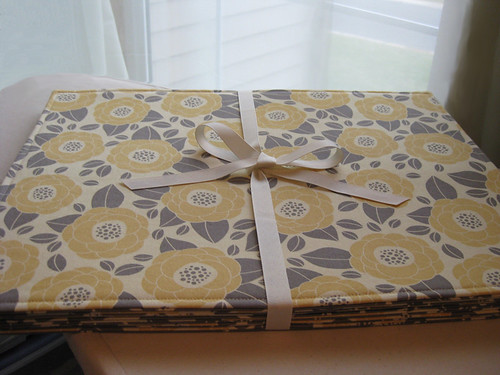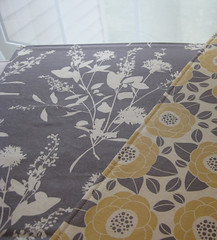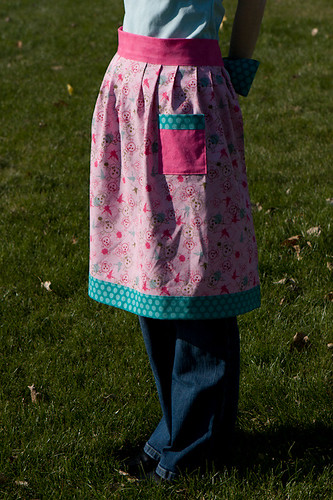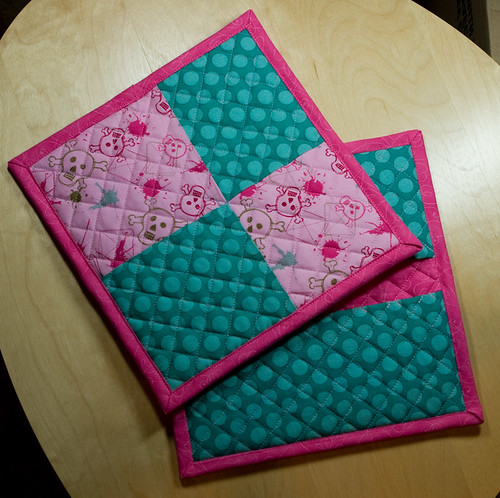
I just finished six place mats for my Aunt Peg. They are loosely based off the pattern in Amy Butler's In Stitches book. (Page 41). I used home dec weight cotton by Joel Dewberry from his Ginseng line.
What I did different from the pattern:
- I didn't put the 3" side panels down each side on the front. I chose to make the fronts a single fabric. I thought the panels, with this fabric, would make them look more modern and I wanted a traditional look to match their home.
- I altered the finished size to be 18" x 14".
- The pattern is for four mats, but I made six.
- I hate hand sewing and I had to slip-stitch the seams together on the 8" opening that had been used to turn the place mats right side out. I stabbed myself in the finger and also managed to catch one stitch through a few threads of the jeans I was wearing. =/ So, basically, I sewed one to my pants...but I was trying to sew in a moving car (passenger seat).... Note to self: don't sew in the car! =)
- I had a heck of a time getting the Peltex to fit in the place mat. The pattern says to cut the Peltex to the exact finished size of the place mat (that doesn't give you any wiggle room!) and leave an 8" opening to shove it through. However, the Peltex catches on everything due to the texture so it takes some work to get it in there. Plus, mine kept bowing because it was a hare too big. I'd take it out, trim it, try again. Repeat. I was about to go insane when my Husband took over. He came up with a great idea to set the Peltex on the cutting board, lay the place mat on top. Then, slip the cutting ruler between the two and line the ruler up under the place mat. Then he lifted off the place mat and roller cut the excess Peltex off. Perfect sizing! The Peltex began to fit inside in just one try! He also clipped the corners off the Peltex (just a tiny bit) so they weren't competing with the seam allowance bunched into the turned points.
- I used my walking foot to help reduce stretch as I sewed them.
- Top stitching through the top, bottom, seam allowance, and Peltex, I found that the top stitches were perfect but the ones on the back side of the mat were crooked. I talked to Nancy at my Bernina Dealer and she had some great advice. She said I didn't do anything wrong. She explained how the needle looks for a space in the weave to push through. My needle obviously had some issues finding a spot on the bottom fabric, especially after going through Peltex as well. She said that when I'm not using fabric with linear patterns (i.e stripes or plaids where you'd notice they were a little crooked), to cut the back of the place mat slightly off-grain and I should not have that problem. She said it better, but that's the summary.
Back Side:






